- Home
- Learn Japanese Language FAQ
- Why is Mushroom written with Katakana and not Hiragana in some cases?
Why is Mushroom written with Katakana and not Hiragana in some cases?

Why is Mushroom written with Katakana and not Hiragana in some cases?
I was on the internet looking for the meaning of "Kinoko" and it turns out it means "mushroom" and so I've been using 「きのこ」. On the Wikipedia page, however, it is presented as 「キノコ」, same but katakana.
And it is not only on Wikipedia but other sites as well. Why is it written in Katakana if it does not represent a foreign language word, onomatopoeia, etc.? Is there a specific story behind that? Thank You!
Reply:
Hi, let me explain the various usage of Katakana in the first place before answering your question. Katakana's most common use is to express loanwords and foreign names. It is basically used to write loanwords "borrowed" from other countries outside Japan. It is also used to write the names and places of foreign countries which cannot be written in kanji.
Besides the above usage, Katakana is also used for:
1. Emphasizing specific words in a sentence
Sometimes, katakana is used specifically to emphasize certain words in a sentence.
A. Instead of the kanji 日本, the katakana version ニッポン is used.
B. Instead of the kanji 力, the katakana version チカラ is used.
C. Instead of the hiragana ごみ, the katakana version ゴミ is used.
Writing the above three words in katakana has the same effect as highlighting them using highlighter.
For example, in the following sentence, if you replace the kanji 力 with チカラ...
これ、何の力だろう ➔ これ、何のチカラだろう
...you will feel more interested in what the strength (チカラ) really is.
2. Softening the meaning of words
Sometimes, when you write certain word in katakana instead of kanji, you are softening the meaning of the word. This is because kanji gives the feeling of strictness whereas katakana tends to soften or weaken the meaning a bit.
For example, suppose you are buying a house, most likely you need to borrow money from a financing company. This borrowed money or loan is called 借金 (しゃっきん - shakkin) in kanji.
However, the kanji 借金 gives a heavy feeling and the borrower doesn't feel good for this term. Therefore in order to avoid this feeling the
3. Making certain words stand out in a sentence
This is quite similar to the first usage (emphasize) above. But the main point here is to prevent certain word from being buried in a sentence and get unnoticed. For example, let's see the following two sentences:
A. あのこんびはぼけとつっこみがはっきりわかれていない
B. あのコンビはボケとツッコミがはっきりわかれていない
In sentence A, the phrase ぼけとつっこみ is written in hiragana. But you will find that it is quite difficult to separate it from the words beside it because they are all written in hiragana.
Whereas in sentence B, the phrase is written in katakana, ボケとツッコミ. This time you can see that it won't get mixed up easily with the hiragana words beside it. You can also see the same effect on the word こんび and コンビ in the above two sentences.
4. Making some words looks "cooler"
Sometimes you write certain words in katakana to make them looks more cooler, more professional. For example, instead of the kanji 総合的な世話係, the katakana version コンシェルジュ (Concierge) looks more professional and easier to understand.
Similarly, ビジネス (business) gives you a much cooler, advanced image than using the kanji version 経済 (economics, business).
Like what you have mentioned in your question, Katakana is also used in onomatopoeia (擬音語) in Japanese. There are some other usage of Katakana beside the abovementioned but I will stop here.
Back to your question - Why is Mushroom written with Katakana and not Hiragana in some cases?
I think the reasons should be point 1 and point 3 given above, to emphasize it and at the same time prevent it from buried in a sentence full of other hiragana. In fact, you will notice that many Japanese vegetables and Japanese fruits are written in katakana more commonly than their hiragana equivalent for the same reasons.
I hope I have answered you question. Leave me a comment below if you have further questions. Thanks.
Hope this helps,
Kia Leng
Reference:
https://jn1et.com/5katakana-usage/








